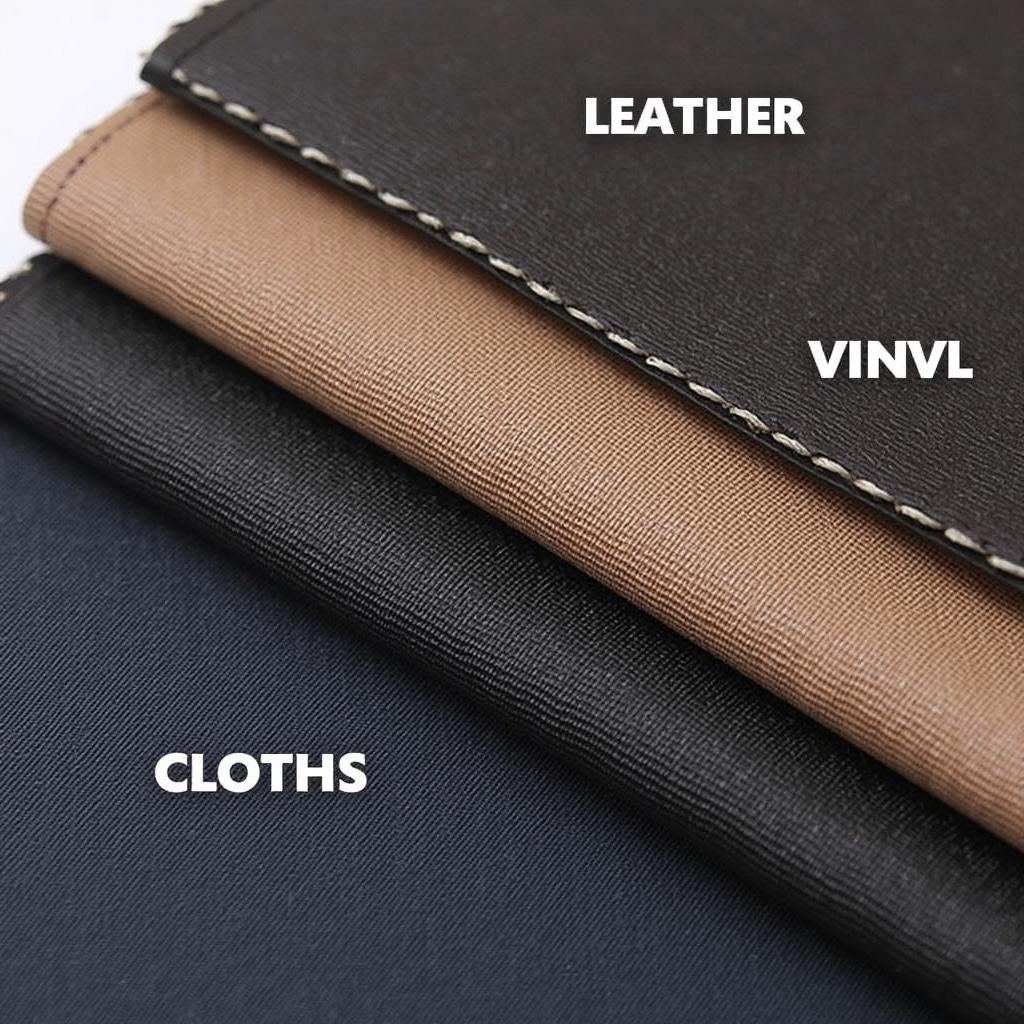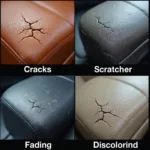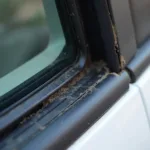Torn or ripped car seats can be an eyesore and even affect the resale value of your car. But before you spend hundreds on a professional repair or a new seat, consider this: you might be able to fix it yourself with the right glue! Choosing the correct adhesive is crucial for a lasting repair, though. In this guide, we’ll delve into the different types of glue suitable for various car seat materials and damage levels.
Understanding Your Car Seat Material
The first step in choosing the right adhesive is identifying your car seat material. This will determine what type of glue will adhere properly and provide a lasting bond.
- Leather: Known for its luxurious look and feel, leather requires specialized glue designed for its unique properties.
- Vinyl: A popular, cost-effective alternative to leather, vinyl is durable and easier to clean. You’ll need a strong adhesive that won’t damage its plastic-like surface.
- Cloth: Cloth car seats offer various styles and textures. For tears and rips in cloth, you’ll need a fabric glue that’s flexible and won’t crack after drying.
Best Glues for Car Seat Repair
Once you know your car seat material, you can choose the appropriate glue for the job. Here are some of the most recommended options:
For Leather Car Seats:
- Leather Glue: Specifically formulated for bonding leather, this type of adhesive comes in various forms, including liquid, paste, and tape. Look for one that’s waterproof, flexible, and dries clear for a discreet finish.
- Leather Repair Kit: These comprehensive kits often include leather glue, a color-matching compound, and various tools for a seamless repair.
For Vinyl Car Seats:
- Vinyl Repair Kit: Similar to leather repair kits, vinyl kits contain specialized glue for vinyl and tools to patch up holes and tears effectively.
- Super Glue: In a pinch, a high-quality super glue can work on minor vinyl tears. However, choose a gel formula over liquid to prevent it from running and creating a mess.
For Cloth Car Seats:
- Fabric Glue: Designed explicitly for fabrics, this type of glue offers excellent flexibility and won’t make the fabric stiff after drying. Opt for a heavy-duty fabric glue for car seats to withstand wear and tear.
- Spray Adhesive: For larger tears or when attaching fabric patches, spray adhesive provides a strong, even bond. Ensure you choose one specifically designed for fabrics and allow for proper ventilation during application.
Repairing Minor Tears and Holes
Small tears and holes in your car seat can often be repaired with glue and a bit of patience:
- Clean the area: Use a mild cleaner and a soft cloth to remove any dirt, dust, or debris around the damaged area. Allow it to dry completely.
- Apply the glue: Following the manufacturer’s instructions, apply a small amount of glue to the edges of the tear. If using a patch, apply glue to both the patch and the underside of the tear.
- Press together: Carefully align the edges of the tear or the patch and press firmly together. Use clamps or weights to hold the repair in place while the glue dries.
- Remove excess glue: While the glue is still wet, carefully remove any excess with a damp cloth.
For more detailed instructions on repairing specific car seat materials, check out our guides:
When to Consult a Professional
While DIY repairs can save you money, some damages are best left to the professionals. If you’re dealing with extensive damage, rips in seams, or airbag deployment, it’s crucial to consult a reputable car upholstery shop.
Expert Insight:
“Attempting complex car seat repairs yourself could compromise the seat’s structural integrity and even affect airbag deployment,” cautions John Miller, a veteran auto upholsterer with over 20 years of experience. “It’s best to leave complex repairs to trained professionals.”
Maintaining Your Repaired Car Seat
Proper maintenance will help prolong the life of your repaired car seat and prevent future damage:
- Regular cleaning: Use a soft-bristled brush and appropriate cleaning products for your car seat material to remove dirt and grime.
- Protectant application: Applying a leather conditioner or vinyl protectant will help keep your seats supple and prevent cracks and fading.
- Avoid harsh chemicals: Avoid using harsh chemicals or abrasive cleaners on your car seats, as they can damage the material.
By choosing the right glue and following proper repair techniques, you can often fix minor car seat damage yourself. However, don’t hesitate to contact a professional for significant tears, seam repairs, or if you’re unsure about tackling the repair yourself.
Remember, a well-maintained car seat not only enhances your vehicle’s interior but also adds to your overall driving comfort and safety.
FAQ
Q1: Can I use super glue on any car seat material?
While super glue can work on minor tears in vinyl, it’s not recommended for leather or cloth. It can damage these materials and create a stiff, noticeable repair.
Q2: How long does it take for car seat glue to dry?
Drying time varies depending on the type of glue used. Always refer to the manufacturer’s instructions for specific drying times.
Q3: Is it safe to use a heated seat after a glue repair?
It’s best to avoid using heated seats for at least 24 hours after a glue repair to prevent the adhesive from softening and compromising the bond.
Q4: How can I prevent my car seats from cracking?
Regular cleaning and the application of a leather conditioner or vinyl protectant can help keep your car seats supple and prevent cracks and fading.
Q5: Can I sew a tear in my car seat instead of using glue?
Sewing is an option for cloth car seats but requires specialized needles and thread designed for upholstery. For leather and vinyl, sewing is not recommended as it can create permanent holes.
Need more help with your car seat repair? Check out these resources:
Need personalized assistance? We’re here to help!
Contact us via:
WhatsApp: +1(641)206-8880
Email: [email protected]
Our dedicated support team is available 24/7 to answer your questions and guide you towards the best solutions for your car repair needs.



